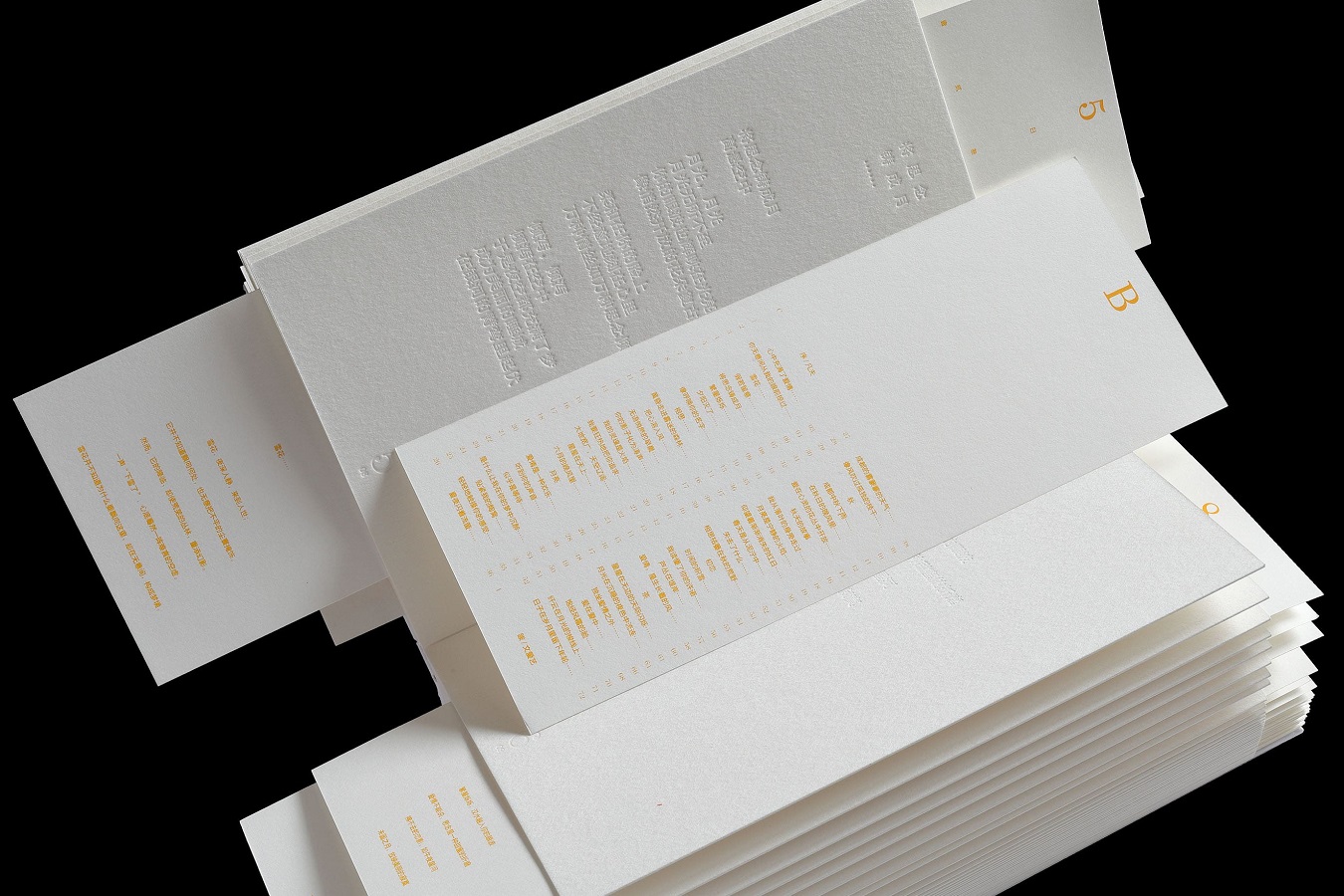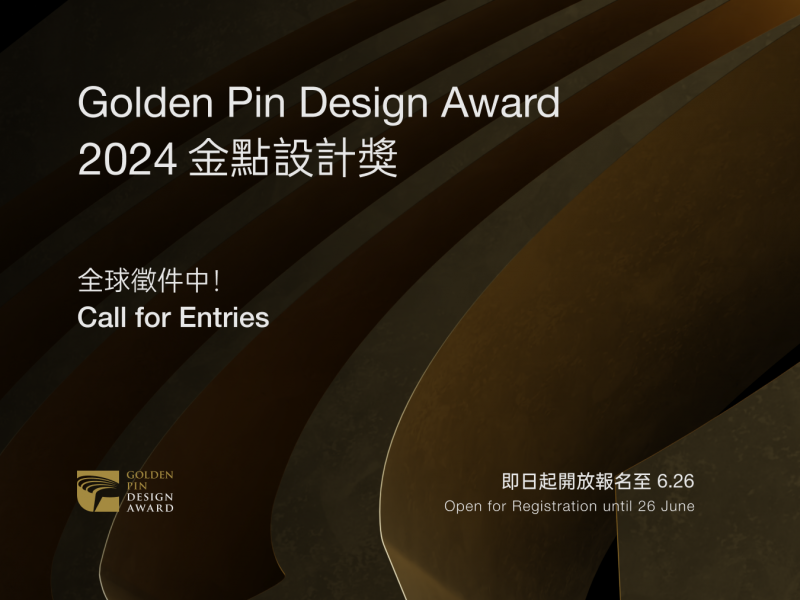Looking over the design works of Liu Xiaoxiang, one may be struck by the wide variety of book types and subjects. Over the years, he has worked on The Classic of Poetry, William Shakespeare, Wen Aiyi’s Love Poems, and other classic literature of both domestic and overseas origin alike. He has also designed for exhibition catalogs such as The Record of Suzhou’s Prosperity: Collected Works of Suzhou Taohuawu Woodblock New Year’s Painting Exhibition and In the Heart of Mountains and Waters: The Art and Life of Chinese Scholars from the 17th to the 20th Century. Academic literature spanning subjects from science and technology, to the humanities and social sciences are also present in his portfolio; among them are such books as the Guide to Commercial Litigation Handbook of the People’s Republic of China, Climate, and The Walls and Gates of Peking. The sheer diversity of his work is truly impressive.
One mention of the title Guide to Commercial Litigation of the People’s Republic of China will likely bring to mind the image of a stereotypical law book; thick and heavy, dull and monotonous, its pages completely overrun with text. Such professional content can be a tough read, but this book designed by Liu completely departs from the stereotype.
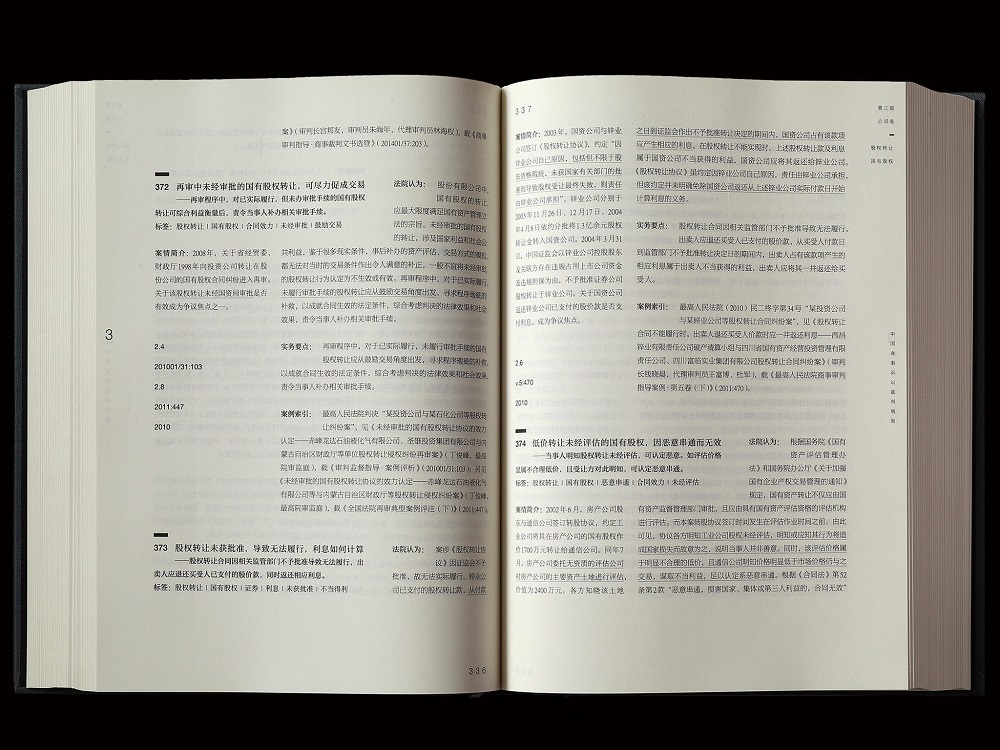
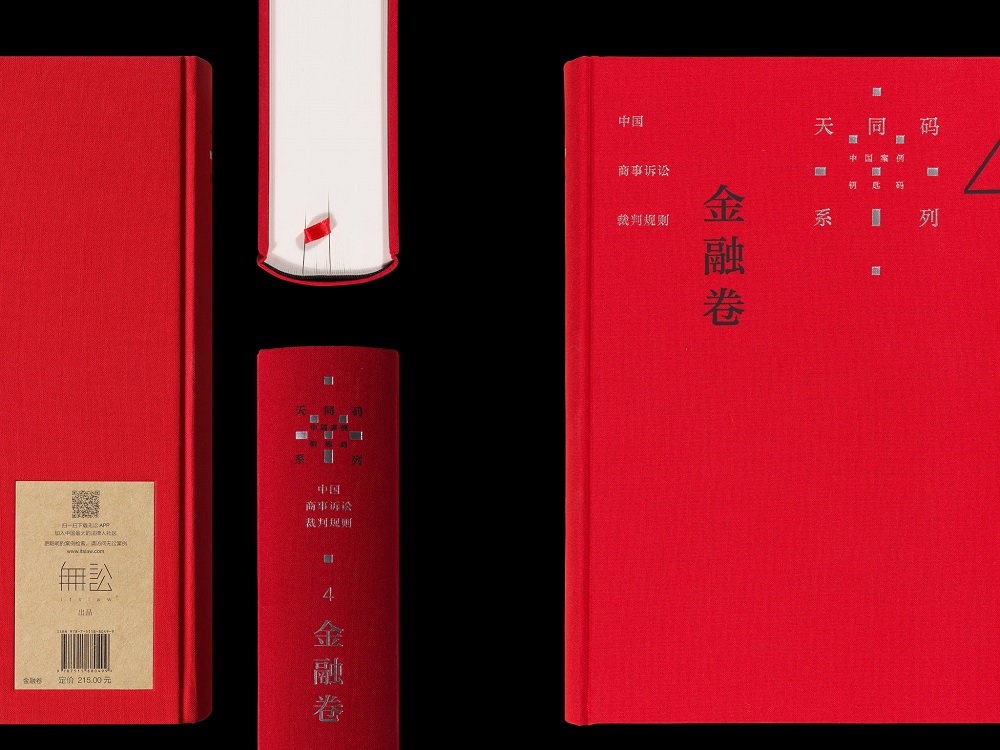
▲ Book cover and inner page design of the Guide to Commercial Litigation of the People’s Republic of China, authored by Chen Zhihui and Jiang Yong, designed by Liu Xiaoxiang, and published by Law Press China in 2016.
The Guide to Commercial Litigation of the People’s Republic of China is a set of seven books, which also includes a separately bound table of contents. From the vibrant use of color on the book covers, to the typeface, font, and binding, as well as the line spacing, border width, and other arrangements designed for content rendering — these seven books present a light and comfortable visual experience, showcasing the beauty of Chinese typography. Legal literature with such ingenious design that not only enhances legibility, but also understanding, is truly an unexpected work of art in its own right.
Such a collision of unexpectedness can lead to major shifts in a person’s career path. In 1996, book design master Lu Jingren organized the “Four Persons Talk About Book Design” exhibition and catalog, alongside famous designers Ning Chengchun, Wu Yong, and Zhu Hong. The exhibition expanded the concept of book design beyond merely the cover and binding, introducing the idea of text and layout design to a Chinese publishing industry still limited to the former notion. This caused quite a stir in the industry, changing the mindset of many designers. Working as a graphic designer in a publishing firm at the time, Liu Xiaoxiang was one of those most affected by this new wave of thoughts.
The industry’s understanding of design at that time was mostly at the level of drawing laces and patterns. Liu recounts,
“I was very surprised after seeing the ‘Four Persons Talk About Book Design’ exhibition. I had no idea that book design could be done in this way. It completely changed my view of design from something confined to ornaments and wedding gowns”.
That is to say, the designer not only performs the work of beautifying the appearance of the book, but also participates in discussions on its presentation with the author, editor, printer, and publisher, becoming part of the decision-making process from a visual communication standpoint. Through this process, the designer helps the book deliver its message more effectively and brings added value to the book itself.
Although his university major was oil painting and he had planned to paint professionally, Liu discovered that the field of design was itself a blank canvas waiting to be painted, and gradually developed a keen interest in design. He devoted his career to design, and coincidentally, he became a student of Lu Jingren. Of all the different kinds of design, he chose to specialize in book design, and over the following twenty years he never looked back.
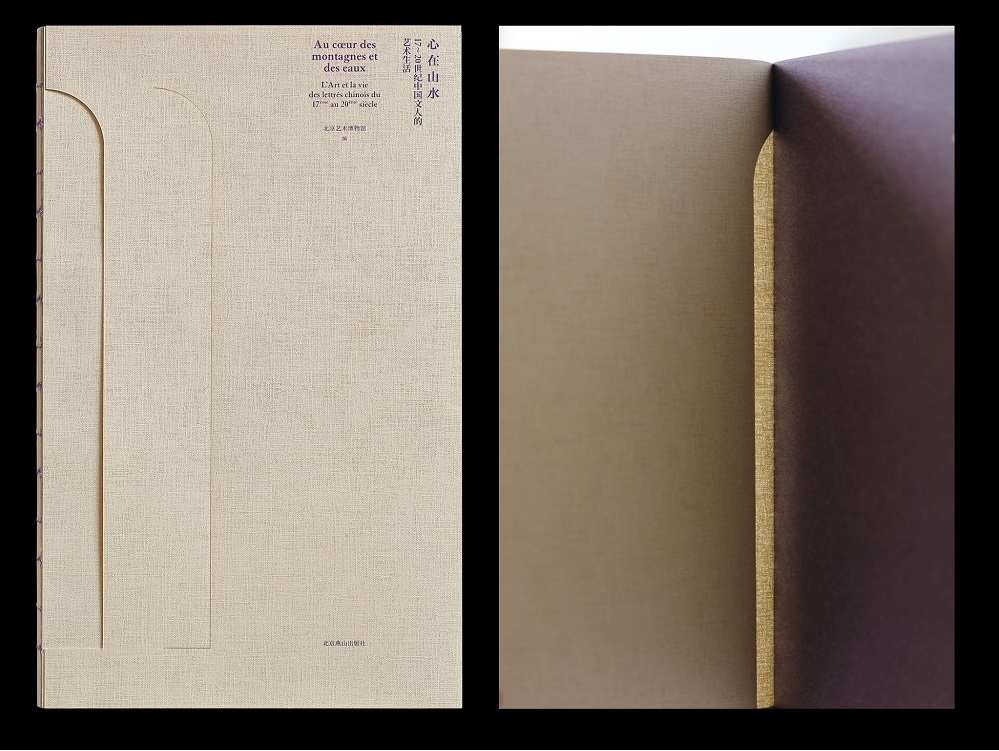
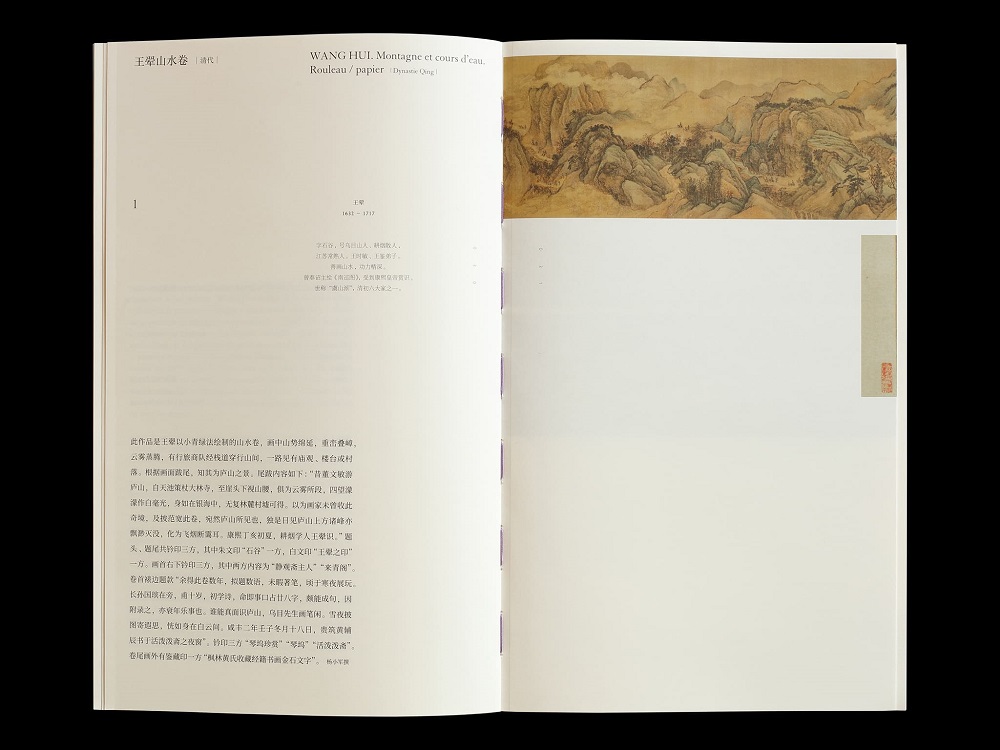
▲ Liu regularly incorporates daily observations into his book design. For example, when he visited Beijing Art Museum, he saw the fusion of Chinese and Western architecture in the arches, and he felt that it reflected the spiritual journey of scholars in contemporary Chinese history who waver between the traditions of Confucius, Mencius, democracy, and science. This observation evolved into the structural design for In the Heart of Mountains and Waters: The Art and Life of Chinese Scholars from the 17th to the 20th Century, authored by the Beijing Art Museum, designed by Liu Xiaoxiang, and published by Beijing Yanshan Press in 2018.
Ever since the concept of book design was introduced to China’s publishing industry, the extent to which designers should be involved with the publication has been a topic of much debate. As a pioneer of his practice, Liu has explored this subject through varying designs for a wide range of books. In his words, “Design is more than just a service; it is a form of creation. It is more important to clarify the relationship between design and text than to ‘adhere to’ the text.”
“When designers all claim they are adhering to the same text, but create divergent designs, should we judge which of these designs better ‘adheres to’ the text, or do we judge them by their distinctiveness and creativity?”
In presenting his thought process, Liu points out that while designers are not the authors themselves, and thus can only approximate an author’s intent and imagination, an outstanding design gives expression to a new form of text.
“[An outstanding design] must use the text as a starting point for its creation. It should bring a new visual sensation to its readers.”
When a text is given a physical form, the form itself becomes part of the content.
When creative design gives expression to the text, it increases the designer’s involvement in the publication . Just as Liu describes books as dwellings of information, he describes book designers as creative directors responsible for the presentation of content, and as engineers that materialize the text. He says, “[The books is] the poetic dwelling of information, a theatre of time and space”.
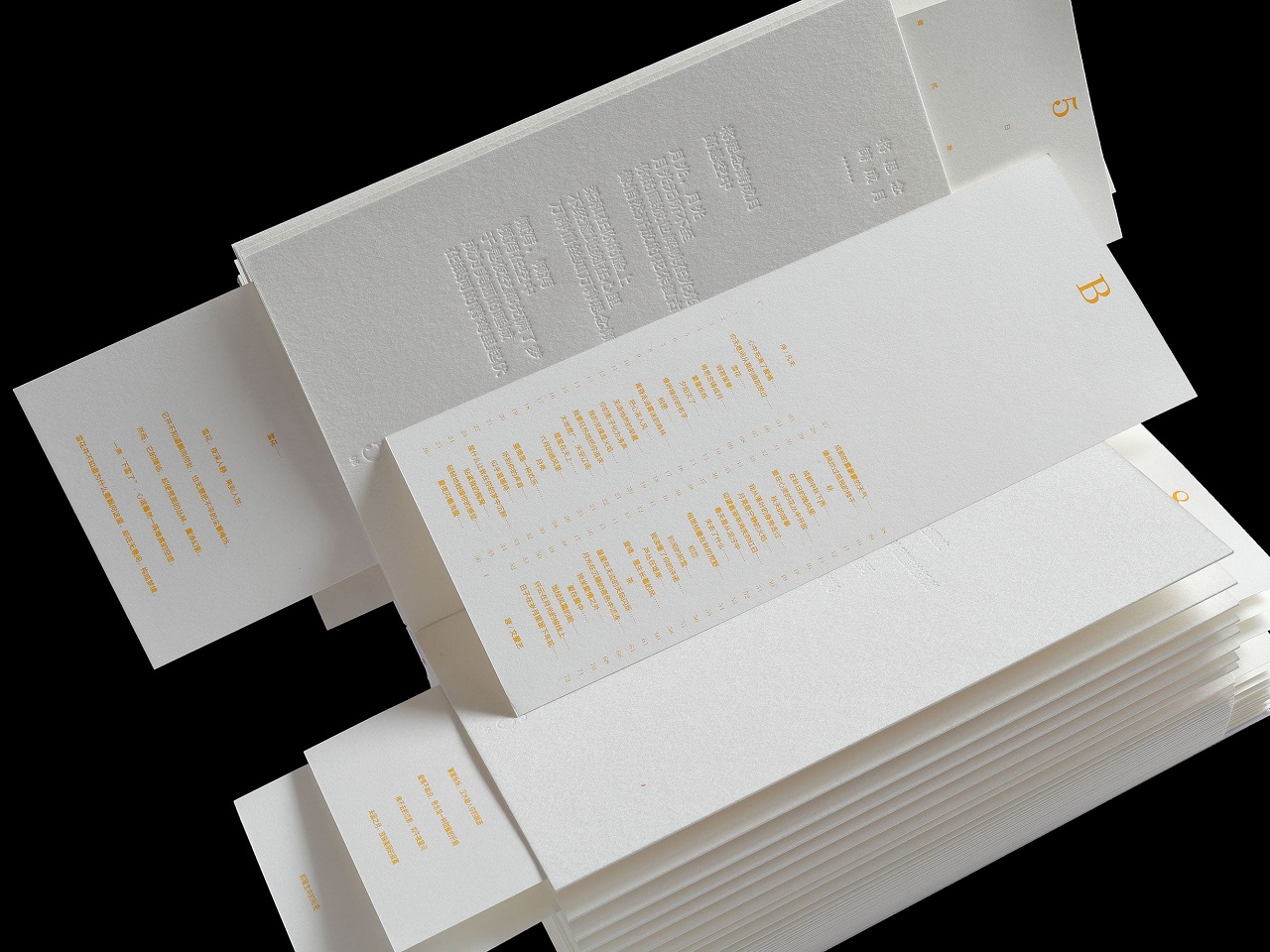

▲ Wen Aiyi’s Love Poems is a handmade book about love. The concept of time runs throughout the book design to illustrate the perpetuity of love. Liu selected 52 poems and made 365 copies of the book in reference to the number of weeks and days in a year. The text is not printed in ink, rather it is embossed, leaving the pages white. The theme of love is expressed through “invisibility”, conveying the message that love is pure and eternal. Cards, screen-printed with orange text, are inserted between the pages and fall out at random while reading the book, which reminds the readers to cherish love. The book was designed by Liu Xiaoxiang, and published by Guangxi Fine Arts Publishing House in 2017.
“I treat anything that can be read as information,” says Liu. He believes that understanding the hierarchy of information, and to “return” it to the correct order, mimics the principle of use and function in spatial design for architecture. The so-called poetry comes from intuitively grasping the nature of a text, and the creative process of materializing the text. Meanwhile, typesetting is more about the unpredictable nature of rules. Differences in text attributes bring about the possibility of creating fortunate accidents. As Liu says, “There can be no poetry without the unexpected”.
Liu also regards the continuous pages of the book as a timeline, and each page within it as a slice of time; the continuity of which being both a space that is constant (the number of pages) and one that is variable (flipping through the pages). Between the immutable (the order of pages) and the variables (shapes and sizes), designers can use their imagination to design the time and space of the page composition, while letting the information roam freely within. From a designer’s standpoint, Liu believes that this is a poetic expression of freedom in design.
Among the works designed by Liu, there are many texts that are cultural classics, or content relating to the cultural connotation and spirit of huaren culture. For example, The Classic of Poetry, which was his first work to receive an award for “the world’s most beautiful book”, Ancient Melodies of the Bells designed for the Big Bell Temple Museum, and The Brush Speaks the Civilization: The Art of Six Scripts of Chinese Calligraphy, which presents the evolutionary history of Chinese calligraphy from seal script to semi-cursive script. However, these books do not look so “traditional”. Rather, they blend classical content with the spirit of modern aesthetics, bringing about a different visual impression and reading experience.
“I value the contemporary meaning of design and publication,” says Liu. He emphasizes the design of books on classical subjects,
“It doesn’t matter if the topic of a book is traditional or not, we design and publish in contemporary times, we must pass on the information of our time, and convey the classical theme to contemporary readers with contemporary visual language and editing methods. We cannot let readers mistakenly think this is a 500-year-old book.”
The Record of Suzhou’s Prosperity: Collected Works of Suzhou Taohuawu Woodblock New Year’s Painting Exhibition, designed by Liu and published in 2016, is a perfect example of this design concept.
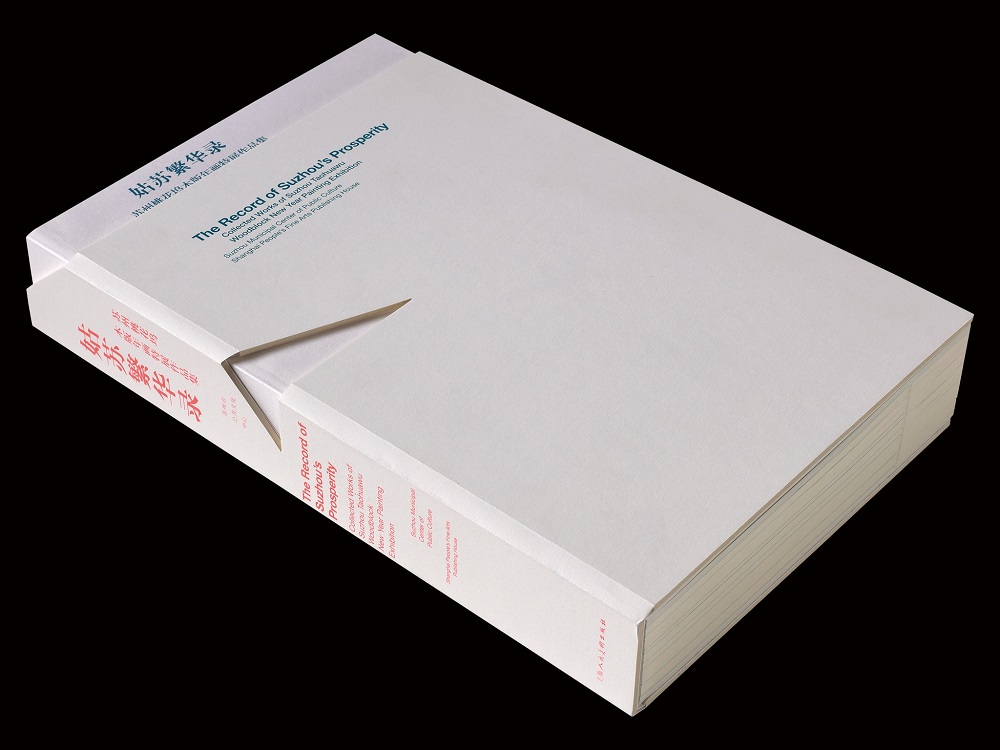
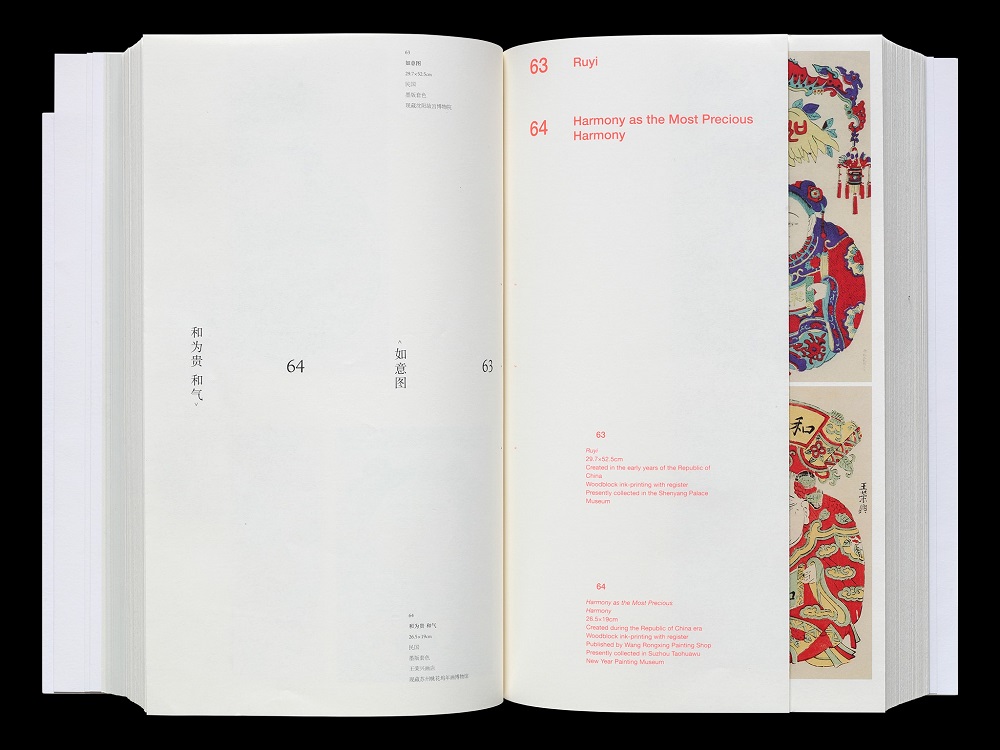
▲ Book cover and inner page design of The Record of Suzhou’s Prosperity: Collected Works of Suzhou Taohuawu Woodblock New Year’s Painting Exhibition, authored by the Suzhou Public Cultural Center, designed by Liu Xiaoxiang, and published in 2018.
In addition to the cutout section of the book cover, which symbolizes a carved woodblock for printing, the book combines Chinese and English fonts, different colors, and other design ingenuity to form stark visual contrasts. It has won numerous awards, including Most Beautiful Book of China in 2017, the 2018 Tokyo TDC Annual Awards, Best in Show at the 2018 New York TDC, and the 2018 ADC Bronze Cube award. These achievements show that Liu’s interpretation of classical subjects using a modern design vocabulary is something that can be appreciated and understood by peers from different cultural backgrounds.
This was not easily accomplished. Liu notes that the Chinese tradition of woodblock printing and writing in vertical columns from right to left, has mostly been replaced in contemporary Chinese publishing. Since the modern publishing system was imported from the West, a critical difference for huaren book designers lies in the fact that the horizontal format has no relation to traditional huaren culture and aesthetics.
Though the tireless endeavors of the design community led by Lu Jingren have brought about major changes in the perception of book design among the public and in the publishing industry, Liu observes an undercurrent in the emerging culture of reading and book design.
“We huaren book designers are actually very conflicted on the treatment of heritage. On the one hand, when we face our international counterparts, we must be rooted in our own culture, or else we lose the foundation of our mutual dialogue and exchange; on the other hand, the rigid change from vertical to horizontal writing has uprooted us from our cultural aesthetics. We are left at a loss.”
“The loss of our aesthetic source means that everything must start from the beginning,” says Liu. He believes that since the status quo is so, it has become the responsibility of book designers to transfer the beauty of Chinese characters into the Western, horizontal writing style. He also points out that the appreciation of heritage is a form of spiritual refinement rather than one of rigidity. More efforts need to be directed toward innovation; for the innovations of today will become the traditions of tomorrow.
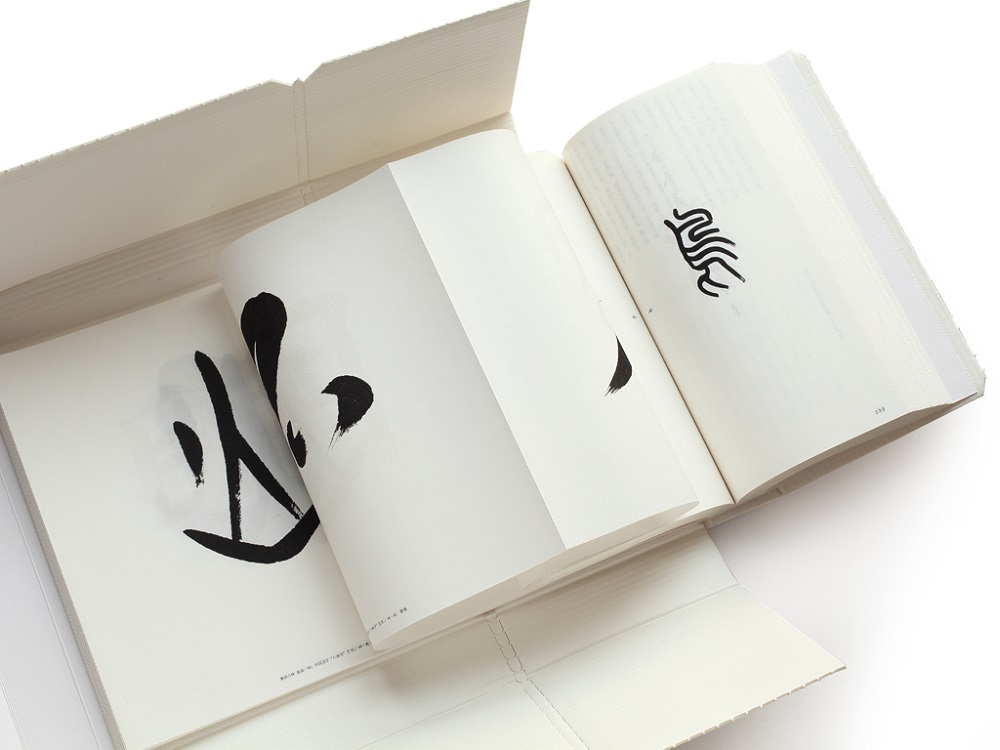
▲ The Brush Speaks the Civilization: The Art of Six Scripts of Chinese Calligraphy, authored by Zhao Hong and Yan Weihong, designed by Liu Xiaoxiang, and published by Higher Education Press.
Explorations in Design: From a Character to a Book
Regarding the text as the starting point of design, Liu continues to explore the creativity of the text through the process of visualization, and broadens the definition of reading itself. For example, when he designed The Brush Speaks the Civilization: The Art of Six Scripts of Chinese Calligraphy, Liu attempted to incorporate the concept of “interactivity” from e-readers onto paper. The result is a book capable of doing what e-readers cannot — allowing its pages to be detached and turned into teaching materials or writing exercises for people learning Chinese calligraphy.
In recent years, Liu has organized his twenty years of exploration in book design, a vast collection of design works, and his research on layout aesthetics and textual layouts. In 2017, Liu published From a Character to a Book: Chinese Typography, a representation of his methodology in book design. The books he designed, whether literature, art, science, or technology, denote the research and practice of his methodology. He also hopes that this book can be used by designers who practice book design, as well as a reference to publishers when designing page margins for book templates. “This is my dream,” says Liu.
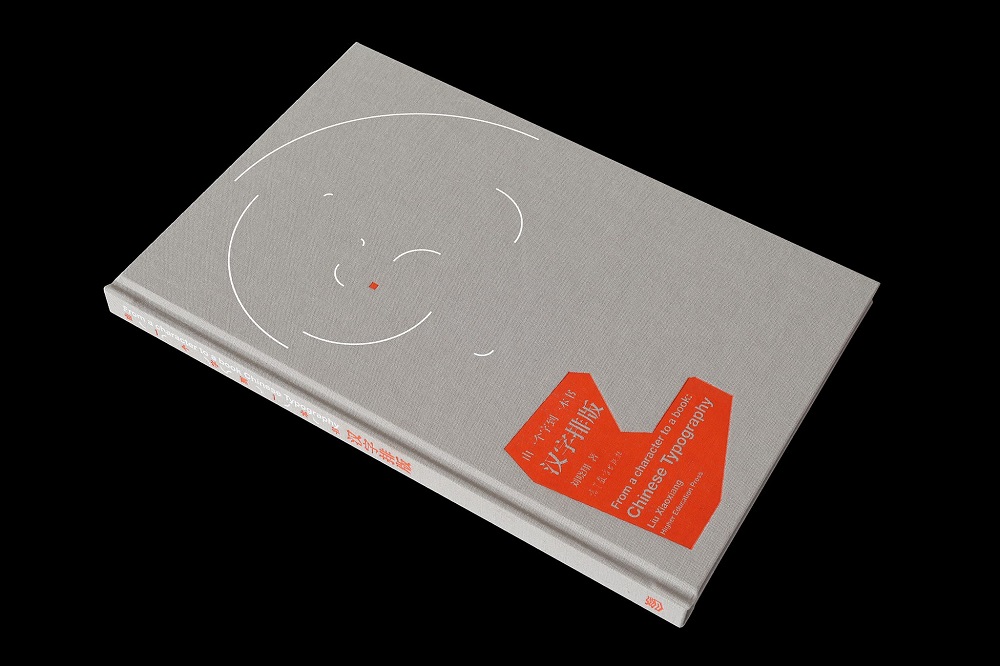
▲ Liu Xiaoxiang merged his book design methodology into a book, From a Character to a Book: Chinese Typography.
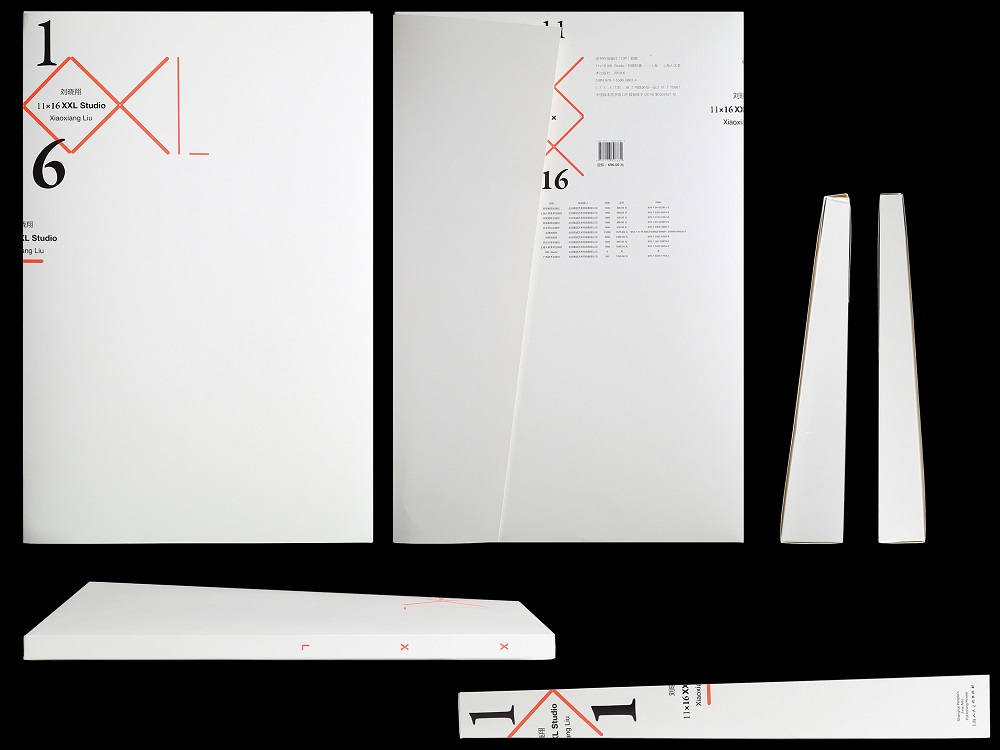
▲ Liu Xiaoxiang also summarized his experience pre-2017 in the collection “11×16 XXL Studio”. This collection contains eleven of his works. The book itself is an editorial design in both form and content, which fully represents his design philosophy.
When asked how he manages to retain such enthusiasm for book design, Liu admits that he can’t quite put his finger on it. Perhaps it is the simple appreciation for books as narrative and communicative vessels through their form, rhythm, logic, and texture. As for his dreams for the future of design, he wishes to work on more books, just as his mentor did.

Liu Xiaoxiang
Liu Xiaoxiang is a renowned book designer from China. He is a member of the Alliance Graphique Internationale (AGI), chairperson of the Bookbinding Committee of The Publishers Association of China, and the artistic designer at the China Higher Education Press. Liu founded XXL Studio in 2012 as its artistic director and is the author of design monograph From a Character to a Book: Chinese Typography and art collection 11×16 XXL Studio.
Devoted to book design for twenty years, Liu’s works span a wide variety of subjects and genres and have won countless awards both at home and abroad. He is a seventeen-time winner of The Most Beautiful Book of China from 2005 to 2017, a three-time winner of Leipzig’s The Most Beautiful Book of the World in 2010, 2012, and 2014, and continues to receive accolades for his works.
This article was originally published on Perspectives.

